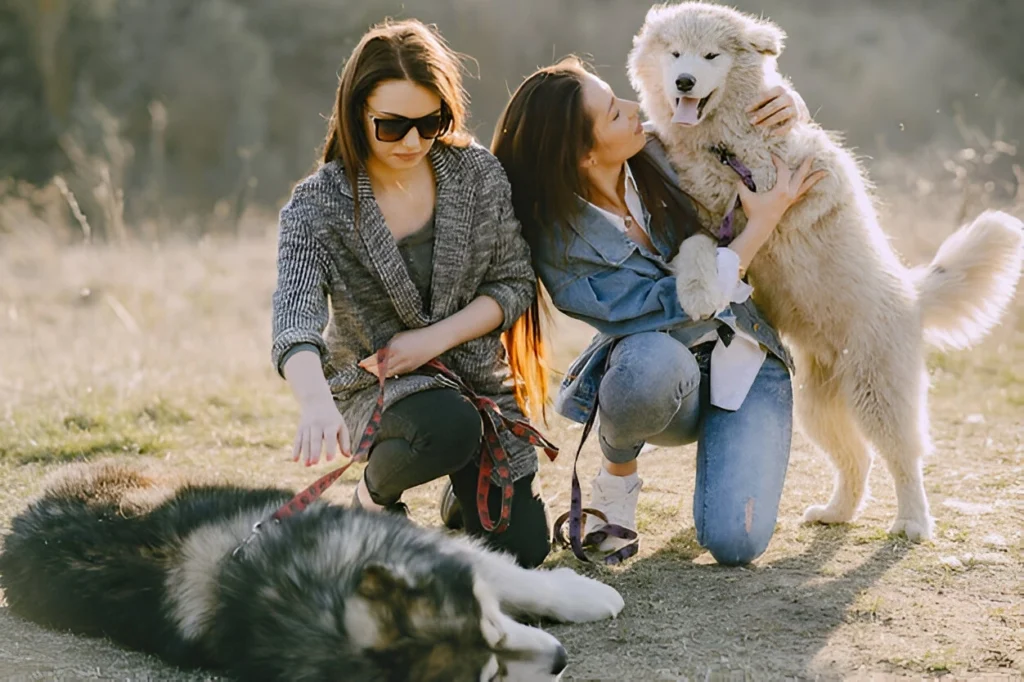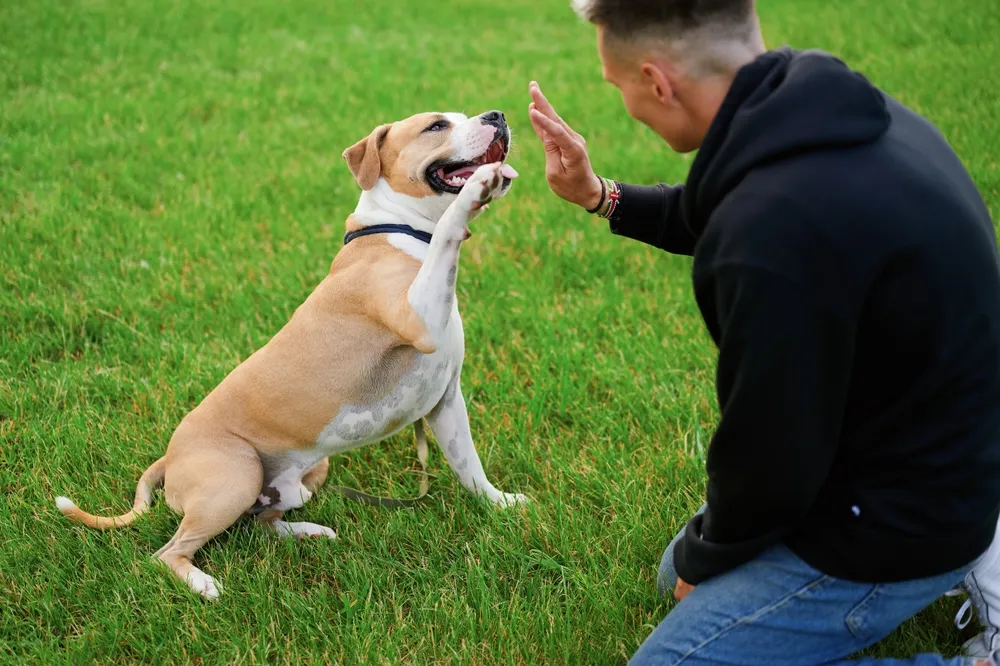
Living in Chicago with a dog? Living here with a dog is great—but yeah, it can get a little wild sometimes. Tight sidewalks, noisy streets, curious squirrels darting through the parks—it’s enough to make any dog lose their cool. And if you’re a dog owner in the city, chances are you’ve run into at least one behavior issue that made you say, “Okay, we need help.”
The good news? You’re not alone. These challenges are incredibly common. The even better news? Trainers around the city, including some of the best like Sit Means Sit, deal with them every single day.
So here are six of the most common dog behavior problems Chicago trainers get called in for—and how they help dogs (and their humans) find some sanity.
What Are the Most Common Dog Behavior Problems in Chicago?
Ask any seasoned Chicago dog owner or professional dog behaviorist, and they’ll probably list these six issues right off the bat.
Let’s break them down.
1. Aggression
What it looks like: Growling, snapping, lunging—whether it’s toward people, other dogs, or even objects like scooters or garbage trucks.
Why it happens: Dogs aren’t born aggressive. It’s often fear, frustration, past trauma, or confusion about how to behave. In busy neighborhoods like Logan Square or Lakeview, there’s just… a lot happening all the time.
How it’s solved: Trainers typically start with desensitization. It’s a gradual process that helps dogs build confidence around the things that set them off. Add in positive reinforcement for calm behavior, and over time, things shift. Some pros even use clicker training or behavior adjustment techniques (BAT).
One trainer put it this way: “We’re not punishing the growl. We’re listening to what it’s telling us—and changing the story.” Smart, right?
2. Leash Pulling
What does it look like: Your dog is walking you. They’re straining forward, reacting to every pigeon, and ignoring every “heel.”
Why it happens: Many owners in the area struggle with dog behavior problems that Chicago trainers see daily. Excitement is the main culprit. Also? Most dogs just never learn how to walk nicely. And let’s be real—how many of us knew how to teach it from the start?
How it’s solved: It starts with managing the environment. Trainers often recommend switching to front-clip harnesses, using stop-and-go patterns, or rewarding calm walking. One local trainer told me they have owners practice indoors first: “Master your living room before you hit Milwaukee Ave.”
Oh—and if aggression is in the mix, leash pulling can get extra complicated. Good trainers look at the full picture.
3. Separation Anxiety
What it looks like: The second you leave? Barking. Scratching at the door. Chewing the remote. Maybe even accidents on the floor, though your pup is 100% potty trained.
Why it happens: Dogs are social creatures. In a city where owners are often working long hours, many pups just feel… abandoned. Add in inconsistent schedules and noise, and boom: anxiety.
How it’s solved: It’s not a quick fix, but it’s doable. Professional dog behaviorists may suggest a combo of short separations, positive associations (like a stuffed Kong), and crate training. You’ll also hear terms like “threshold building” and “desensitization.”
And yep, doggy daycare is a valid option—especially when run by pros like Sit Means Sit, who know how to handle anxious dogs with care.
4. Excessive Barking
What it looks like: They bark at the mail carrier, the hallway echo, other dogs out the window, you cooking breakfast… everything.
Why it happens: Some dogs are just wired to alert. Others are bored. And some? They’re straight-up anxious. In a loud city, it’s not surprising they pick up on every sound.
How it’s solved: Trainers usually start by figuring out why they’re barking. Then, they introduce calm signals and a “quiet” command. But here’s the trick—don’t yell “quiet!” when your dog is barking. That’s just joining the party. Instead, stay calm, wait for a pause, then reward it.
Increasing mental stimulation (think puzzles, sniff walks) helps too. Because tired dogs bark less.
5. Jumping on People
What it looks like: Your dog sees a human and launches like a torpedo. Cute when they’re small—not so much at 70 pounds.
Why it happens: Jumping is often just over-excitement. Your dog is like “HI YOU’RE HERE OMG.” It works, too—people react, which makes the behavior stick.
How it’s solved: Trainers teach alternatives. Sit to greet is a big one. You walk in, your dog sits, and only then do they get the hello. Everyone has to be on board, though—no “oh I don’t mind!” from guests.
Consistency is key. And treats. Lots of those.
6. Destructive Behavior
What it looks like: Torn-up couch cushions. Shredded blinds. Chewed-up shoes. Or your favorite book destroyed—because, of course.
Why it happens: Usually it’s boredom, lack of exercise, or yep—separation anxiety again. Some dogs just need more stimulation than they’re getting.
How it’s solved: First step? Puppy-proofing. Second? Make sure your dog has enough outlets. That might mean more walks, brain games, tug sessions, or structured downtime.
One trainer joked: “A tired dog is a good dog—but not just physically. Mentally tired dogs make better decisions.”
Why a Local Chicago Trainer Can Make All the Difference
Look—training advice online is everywhere. But city life? It’s different. A trainer who works with Chicago dog owners gets it.
They know:
- Sidewalks are narrow.
- Parks are crowded.
- Elevators are unpredictable.
- Noise is constant.
They also know how to navigate it all. Whether that’s leash reactivity near the ‘L’ or teaching your dog to be chill in a Wicker Park cafe, local expertise matters.
Many programs, like Sit Means Sit, specialize in city-friendly training. They’ve seen every breed, every age, every issue—and they adapt to your block, your building, your schedule.
When to Get Help? Honestly—Now’s Good
If your gut’s saying, “I think my dog needs help,” trust that. Many dog behavior problems Chicago trainers handle are easier to manage when owners trust their instincts early. In fact, understanding dog training basics can help you take that first step with more confidence.Most behavior problems won’t just fix themselves. They often get worse.
The sooner you start, the better the results. Puppies benefit from early structure. Older dogs absolutely can learn new things (yes, the cliché is false).
And asking for help? That’s smart, not a sign of failure. You’re not supposed to know it all. That’s why trainers exist.
Conclusion
Look, if you’re dealing with dog behavior problems in Chicago, the best thing you can do is talk to someone who knows what they’re doing.
Whether it’s aggression, leash pulling, separation anxiety, or excessive barking, there’s a solution—but you have to take the first step.
Prestige Dog Training is one trusted option in the city. They’re known for real-world strategies, kind training methods, and helping everyday owners see real change. They’re not here to judge. They’re here to help.
Book a behavior consultation today—and start turning the chaos into calm. Your dog will thank you—and honestly, so will you.



